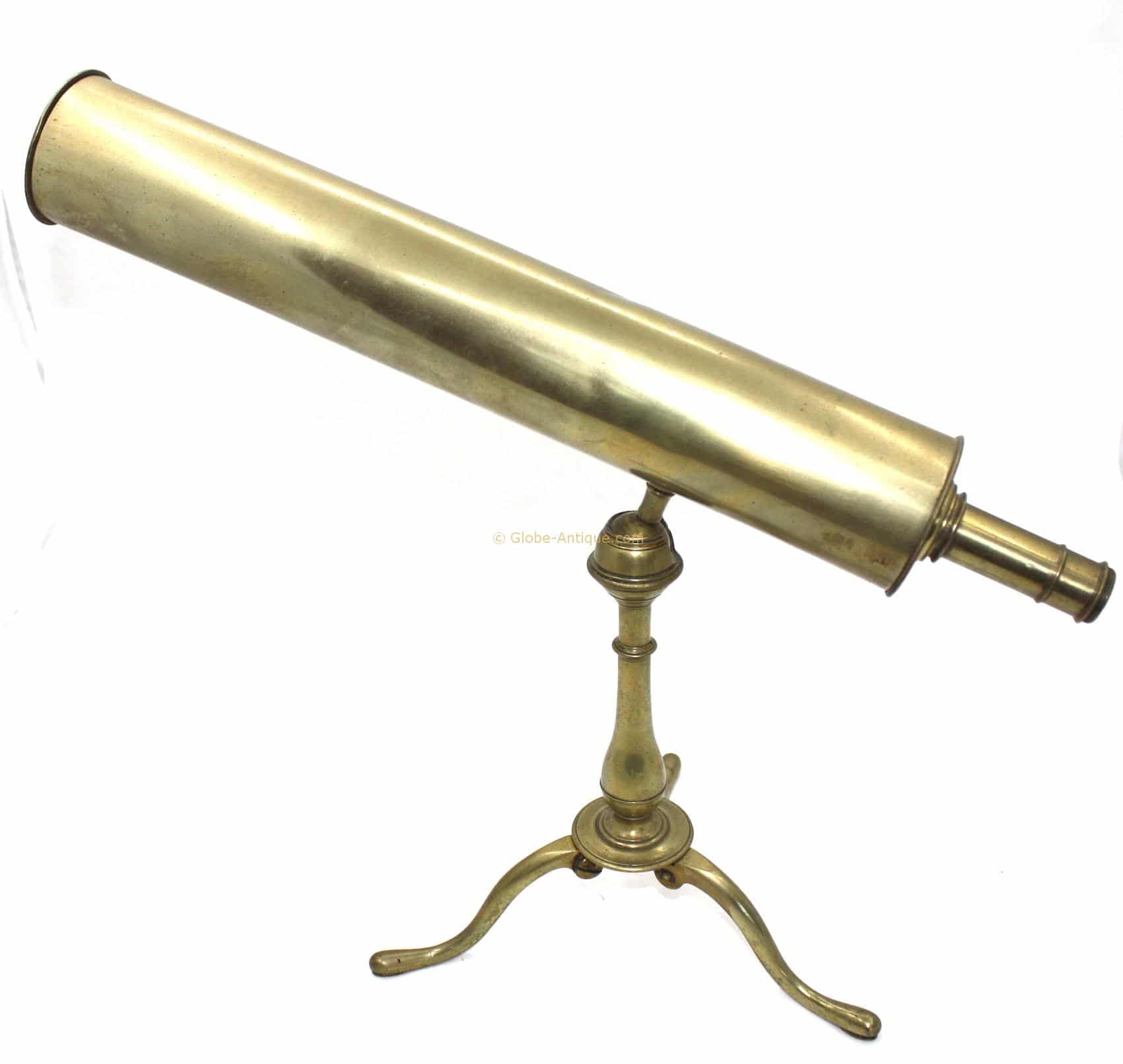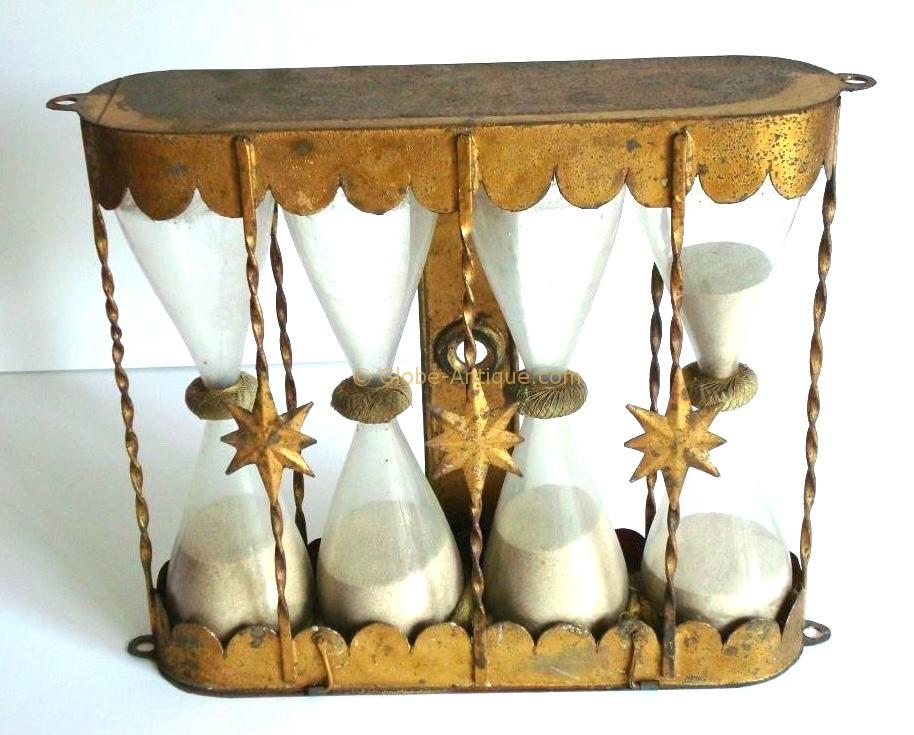Description
Reflecting telescope signed Navarre à Paris.
A reflecting telescope (also called a reflector) is a telescope that uses a single or a combination of curved mirrors that reflect light and form an image.
A reflecting telescope uses curved mirrors to focus the light rather than the lenses of “normal” telescopes.
The light passes down the tube of the instrument and is reflected back to where it is again reflected by a smaller mirror to the eyepiece which is in the middle of the primary mirror.
These multiple reflections allow an instrument of manageable size to have a much greater effective length.
in 1668, Isaac Newton devised a reflecting telescope. Instead of a lens, it used a single curved main mirror, together with a smaller flat mirror.
Isaac Newton built his reflecting telescope as a proof for his theory that white light is composed of a spectrum of colours.
He had concluded that the lens of any refracting telescope would suffer from the dispersion of light into colours (chromatic aberration).
The reflecting telescope was developed in 1668 by Newton, though John Gregory had independently conceived of an alternative reflector design in 1663.
Cassegrain introduced another variation of the reflector in 1672.
Navarre François was an scientific instruments maker and was Ingénieur in Physical instruments for the Monseigneur le Duc de Bourgogne, grandson of LOUIS XIV.
Optician. According to an inscription on a small gregorian telescope he was a pupil of Noël with whom he worked in teh 1760s
He presented new forms of gregorian telescopes to the Académie des Sciences in 1769 and 1778 (2), and worked with Jeurat (3).
Navarre present to the Scientific Academy some telescope between 1769 and 1778.
It was based at Quai de l’Horloge before 1760.
These reflecting telescope were appreciated for cabinet of curiosities and for astronomers.
A rare opportunity to own a large and early reflecting telescope signed Navarre






